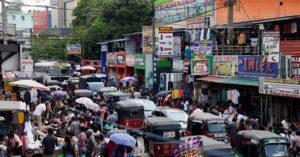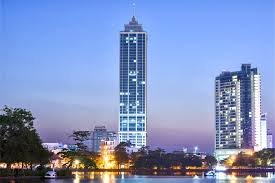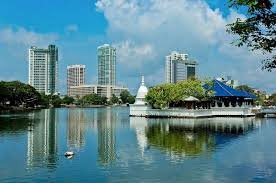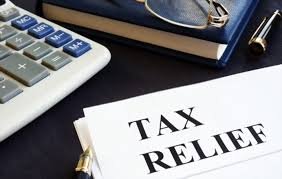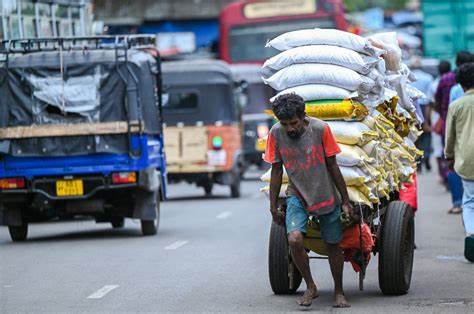
Government’s Power Struggles and Policy Woes Pose Risks to Economic Recovery
- CNL Reporter
- May 18, 2025
- Weekly Economic Review
- Sri Lanka’s Economic
- 0 Comments
Weekly Economic Review
Sri Lanka’s economic recovery is facing renewed pressure due to mounting fiscal challenges, rising energy costs, and fragile investor sentiment. While signs of growth remain, structural imbalances—particularly in the power sector—threaten to undermine hard-won gains following the 2022 sovereign default.
A proposed 18.3% hike in electricity tariffs by the Ceylon Electricity Board (CEB) is set to ripple across the economy, driving up production costs, squeezing household budgets, and potentially weakening the country’s global competitiveness.
The tariff increase, backed by the Treasury, is aimed at recovering previous losses and restoring financial stability to the state-run utility, which reported a staggering Rs. 42.2 billion deficit for the last seven months of 2024- 2025.
This proposed adjustment follows a controversial decision by the Public Utilities Commission of Sri Lanka (PUCSL) to enforce an unsought 20% tariff cut earlier in the year, which directly contributed to the CEB’s losses.
According to CEB’s tariff filing, the move not only impacted operations but also delayed progress on critical benchmarks under Sri Lanka’s International Monetary Fund (IMF) program. A key requirement of the Extended Fund Facility (EFF) agreement is the implementation of cost-reflective electricity pricing to ensure financial sustainability of public utilities.

Energy sector inefficiencies have been compounded by past central bank policies that led to currency depreciation, escalating dollar-denominated energy costs. These losses, financed through domestic bank borrowing, were among the triggers of the country’s 2022 default.
The current attempt to raise tariffs aims not only to bridge the CEB’s revenue gap but also to address structural reforms agreed under the IMF deal.
The broader economic impact of higher electricity rates could be severe. Industries, especially manufacturing and exports, are likely to face elevated input costs, pressuring profit margins and threatening job security.
Tourism-related businesses, including hotels and restaurants, may find it difficult to pass on these costs to customers, eroding their profitability. Similarly, low-income households—already burdened by inflation and reduced earnings—may face greater financial distress, further curbing consumer spending.

Economists warn that the resulting cost-push inflation could stall consumer demand, reduce investment, and ultimately temper GDP growth. Although the World Bank has projected a moderate 3.5% growth rate for 2025—down from 5% in 2024—the outlook remains clouded by persistent poverty, still high at 24.5%, and weak labor market conditions.
Meanwhile, fiscal indicators present a mixed picture. For the first quarter of 2025, government revenue and grants rose to Rs. 1,067.4 billion, compared to Rs. 916.2 billion during the same period last year.
However, expenditure and net lending also increased, reaching Rs. 1,301.9 billion. While the budget deficit shrank slightly to Rs. 234.5 billion, the reliance on foreign financing—Rs. 81 billion compared to a net repayment of Rs. 14.9 billion in Q1 2024—highlights the ongoing need for external support.
On the monetary front, the Central Bank reported a liquidity surplus of Rs. 157.85 billion as of May 16, 2025, though down from Rs. 194.5 billion the previous week. Treasury bond and bill yields remained stable, but secondary market trading volume dropped by nearly 40%, largely due to a shorter three-day trading week.
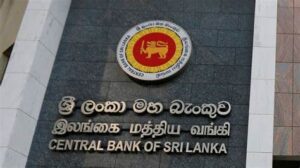
Investor sentiment remains fragile. Foreign investors pulled out $4.6 million (Rs. 1.38 billion) from government securities during the week ending May 15, reversing two weeks of inflows. This comes amid a slight depreciation of the rupee and global uncertainty triggered by U.S. tariff announcements. Despite this, Sri Lanka has seen a net inflow of Rs. 20.4 billion into government securities since late December 2024.
Another notable fiscal development is the sharp rise in Financial VAT collections, up over 400% to Rs. 40.4 billion in Q1 2025, from Rs. 9.3 billion a year earlier. This indirect tax, largely borne by banks, is not invoiced to customers but absorbed as part of value-added within firms. With banks raising salaries to retain staff amid an exodus caused by higher income taxes, financial VAT collections surged, surpassing shareholder payouts in some cases.
While these collections have bolstered state revenue, they also underscore the burden placed on financial institutions, which are now key contributors to government income. Shareholders have seen limited returns, with many banks issuing stock dividends to shore up capital buffers instead of cash payouts.
In parallel, the government is actively pursuing stronger economic ties with India through trade and infrastructure initiatives, and exploring new tax mechanisms targeting digital services. These efforts, while potentially boosting long-term growth, may also introduce near-term uncertainty for key industries.
In conclusion, Sri Lanka’s mid-2025 economic narrative is one of cautious recovery tempered by deep structural challenges. The urgent need for energy sector reform, fiscal consolidation, and investor confidence-building remains. Without decisive policy alignment and improved coordination among regulatory bodies, the road to sustainable growth may become increasingly difficult.
